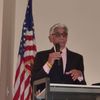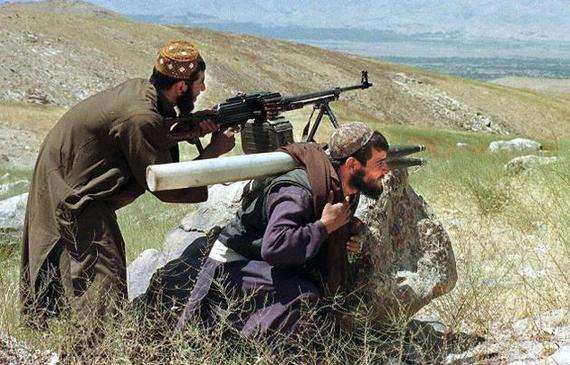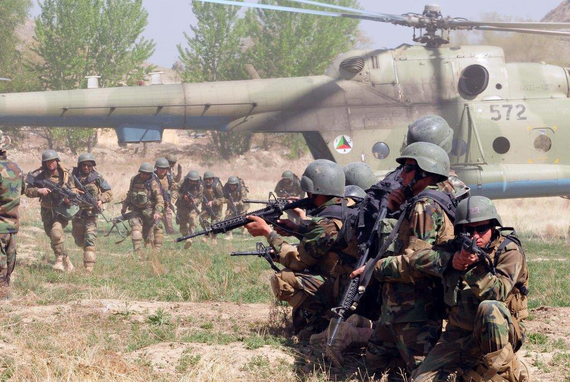Taliban in Action Photo:PKKH.tv
The fighting pattern in Afghanistan, at least since the Taliban became resurgent circa 2006, has followed a predictable pattern: fighting lull in the winter due to inclement weather and resumption of Taliban attacks in the spring. But the Taliban would still carry out low level sporadic attacks and assassinations during this lull.
2016 saw a change in this predictable pattern as the Taliban continued relentless military pressure on the Afghan National Security Forces (ANSF). This began last September with the spectacular assault on Afghanistan's fifth largest city, Kunduz. They were driven out after 15 days of fighting with the considerable help and airpower of the US forces. In the southern province of Helmand, the Taliban are in full control of many districts including Sangin and Khanashin. In a brazen attack on ANSF facilities in Kandahar Airport, the Taliban killed dozens last December. Also in December, the Taliban launched a suicide attack near Kabul Airport. In January the Taliban attacked a compound in Kabul used by foreigners. On Monday February 1st a suicide bomber attacked the Afghan National Civil Order Police station in Kabul. There were at least 20 police officers killed and scores more mostly civilians injured. According to the Special Inspector General for Afghanistan Reconstruction (SIGAR) Report, Afghanistan is a more dangerous place today than a year ago and the Taliban control more territory than at any time since 2001. The emergence of an ISIS branch in the eastern province of Nangarhar adds to the travails of the ANSF.
Afghan Army in Action
What is significant this year is that the Taliban were able to escalate the fighting in the absence of their founding leader, Mullah Omar, who, it was revealed in July of 2015, had been dead since 2013. While there have been numerous reports of discord and infighting between various Taliban groups, their brazen attacks show their continued resilience to the detriment of Afghanistan.
The Pakistani government for the first time recently acknowledged that Pakistan is harboring Afghan Taliban amid pronouncements that they are in favor of a peaceful settlement between their protégées and the Afghan government. The Quadrilateral Coordination Group (QCG)consisting of Afghanistan, Pakistan, US and China was hopeful for the eventual participation of the Taliban in the peace talks. But the Taliban categorically rejected taking part in talks tentatively scheduled for early March. They reiterated their demand, which is the complete withdrawal of foreign troops from Afghanistan before any engagement in peace talks.
In my opinion there are three reasons for the Taliban's rejection of the latest peace talks: 1) The Taliban think that they have the upper hand in the fight vis a vis ANSF. They therefore can negotiate better from their position of strength. 2) Since Pakistan has publically acknowledged its support of them, the Taliban do not want to appear subservient to the will of Pakistanis. Pakistan had indicated that the Taliban would partake in the March talks. 3) The infighting between the Taliban factions, some of whom reject any talks, prevents new leader Mullah Mansoor from taking a position on peace talks. Given the degree of animosity and the breadth of heavy fighting from Helmand in the south to Jowzjan in the north of Afghanistan, the road to peace is an arduous one at best.
There is dissent and political infighting within the Afghan government also which could add to the complications of the peace process. The Afghan High Peace Council was revived recently with Peer Gailani as its head. In a recent interview with the BBC, Mr. Gailani questioned the legitimacy of fighting with and killing Taliban. Afghan CEO Abdullah called for his resignation, insinuating that Mr. Gailani favors the Taliban over the interests of Afghan government.
March 21, 2016 brings a new year to Afghanistan according to the Afghan calendar and normally the beginning of a new fighting season. However, this year the fight never ceased and the old fighting continues unabated, causing much suffering for the powerless rank and file Afghans caught in between.
The US and NATO allies continue to reassure the Afghans that they will not abandon Afghanistan. But Afghans are tired of their government's incompetence and impotence in the face of the Taliban onslaught. Young people leave in droves, braving a perilous journey to find a better life for themselves in Europe.
Unfortunately, it does not seem that the new Afghan year 1395 beginning on March 21 will not usher in any kind of hopeful relief.


